7 reasons why your mattress and pillow are turning yellow — and how to tell if they're still safe to sleep on
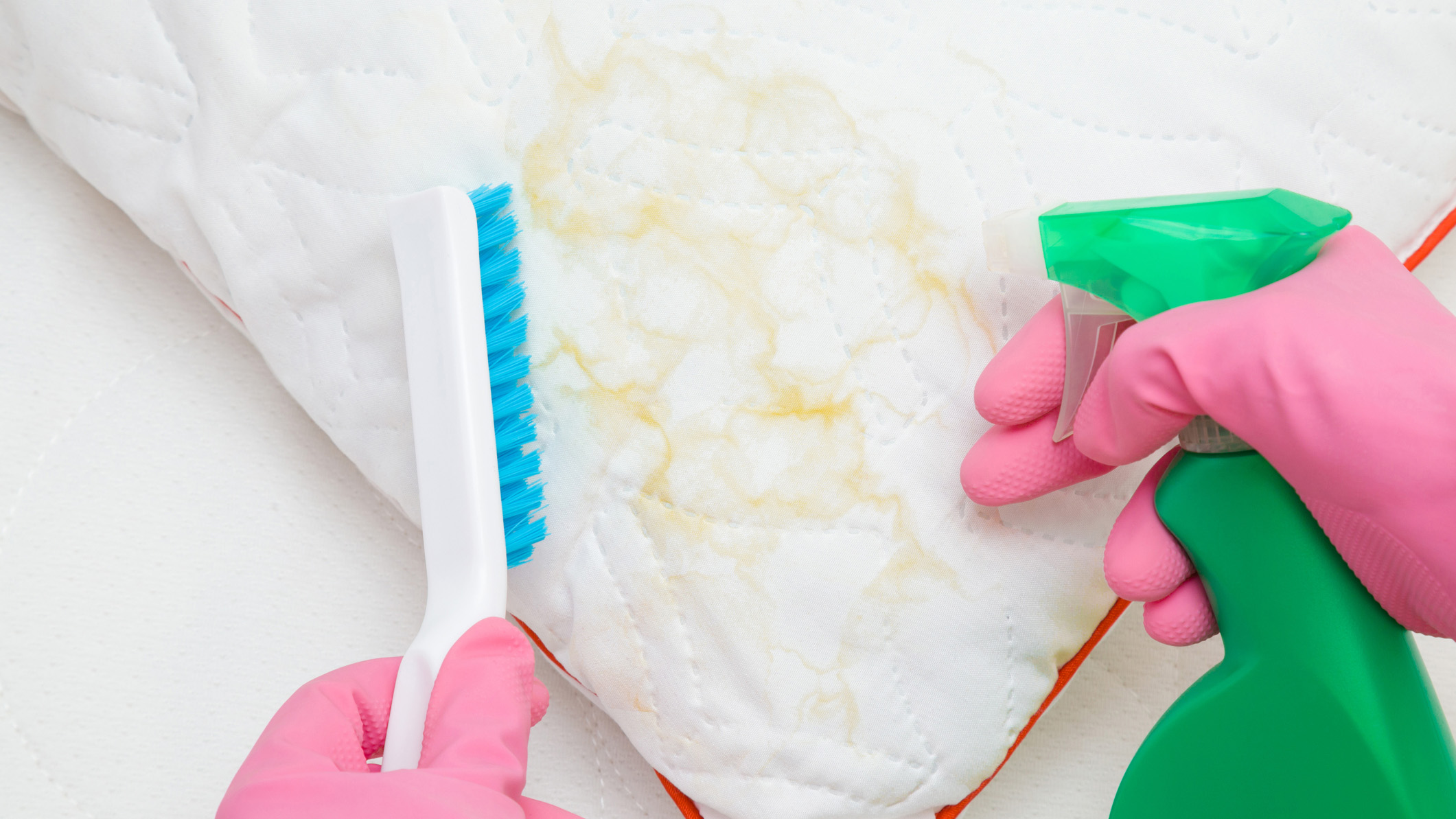
While yellow stains on your mattress and pillow are unsightly they are nothing to be ashamed about. You spend a third of your life in bed, so it’s not surprising that over the years, wear and tear begins to show.
On top of this, mattresses and pillows are usually made from absorbent materials, so bodily fluids, spills and accidents will get soaked up, contributing to the discoloring.
While most of the time, yellow stains are normal and to be expected, there are some instances where you will need to remove them.
Sometimes they're an indication that it’s time to replace your mattress and pillow. If that's the case our guide to the best mattresses to buy this year contain our top recommendations for a range of budgets, as well as best pillows guide.
In the meantime are the seven most common causes of why mattresses and pillows turn yellow and whether they're safe to sleep on...
7 reasons why your mattress and pillow are turning yellow
Yellow marks are one of the most common mattress stains and primarily caused by clear liquids oxidizing before turning yellow and eventually brown. Let’s take a closer look at the main culprits behind these marks...
1. Sweat and sebum
While you may think yellow marks are dirt, it’s more likely sweat and sebum. When we sleep, we secrete sweat and oils, so much so that we can lose over a pint of sweat every night.
Get instant access to breaking news, the hottest reviews, great deals and helpful tips.
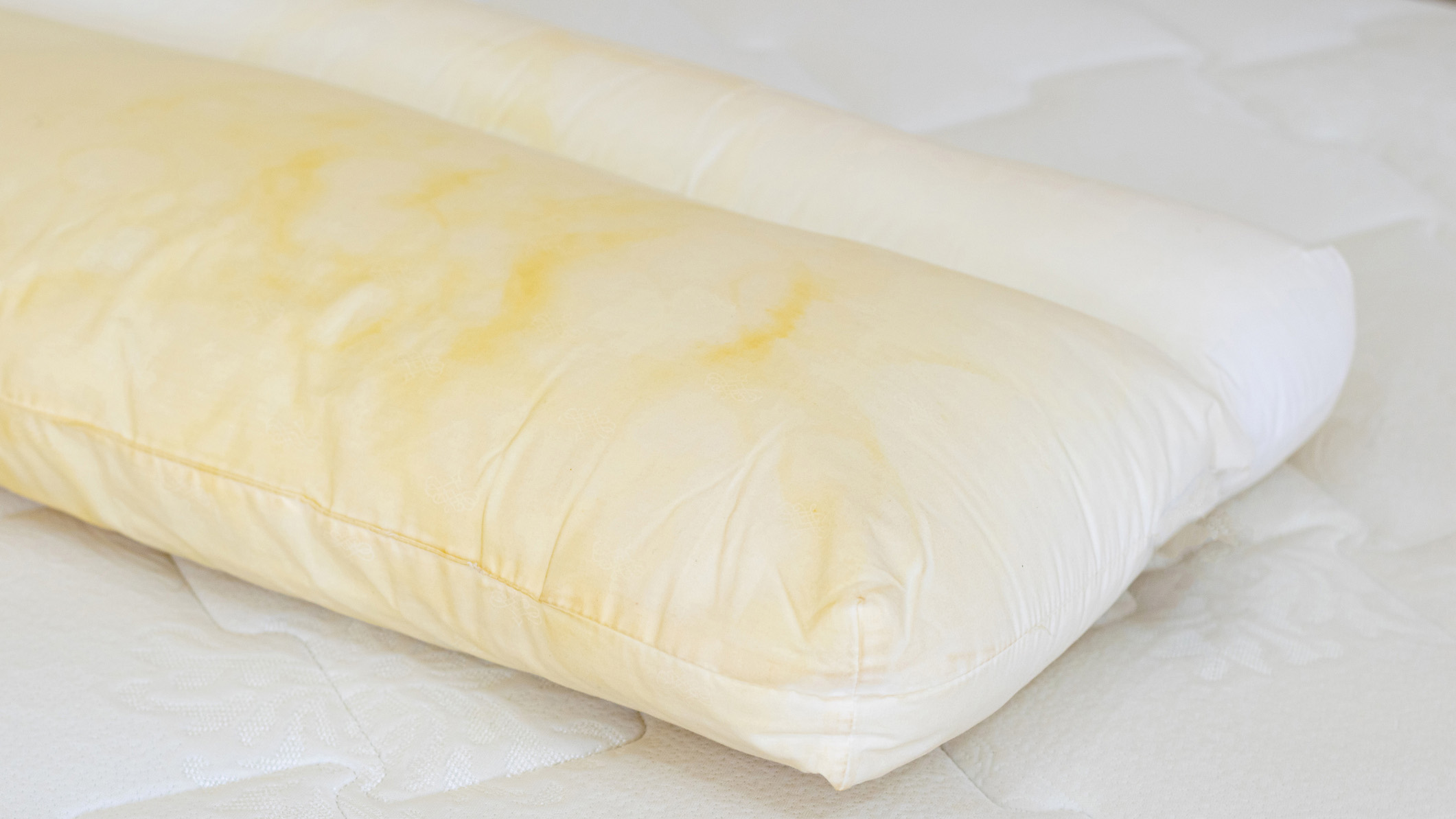
Inevitably, that causes some discoloration. However, it doesn’t happen overnight. The oxidation process can take a while which is why it might seem like your stains have suddenly appeared.
A waterproof mattress protector, a mattress topper and regularly cleaning your sheets can help combat this.
2. Saliva
Like it or not, you probably drool in your sleep. Even if it’s just for a few minutes when you roll onto your side momentarily, this saliva will soak into your bed, through your sheets and to your mattress.
This is more likely to occur when you have a blocked noise and resort to mouth breathing during the night.
This usually affects your pillows more than your mattress, but the moist environment created is the perfect breeding ground for bacteria. And, as you can imagine, this leads to gradual yellowing of the material.
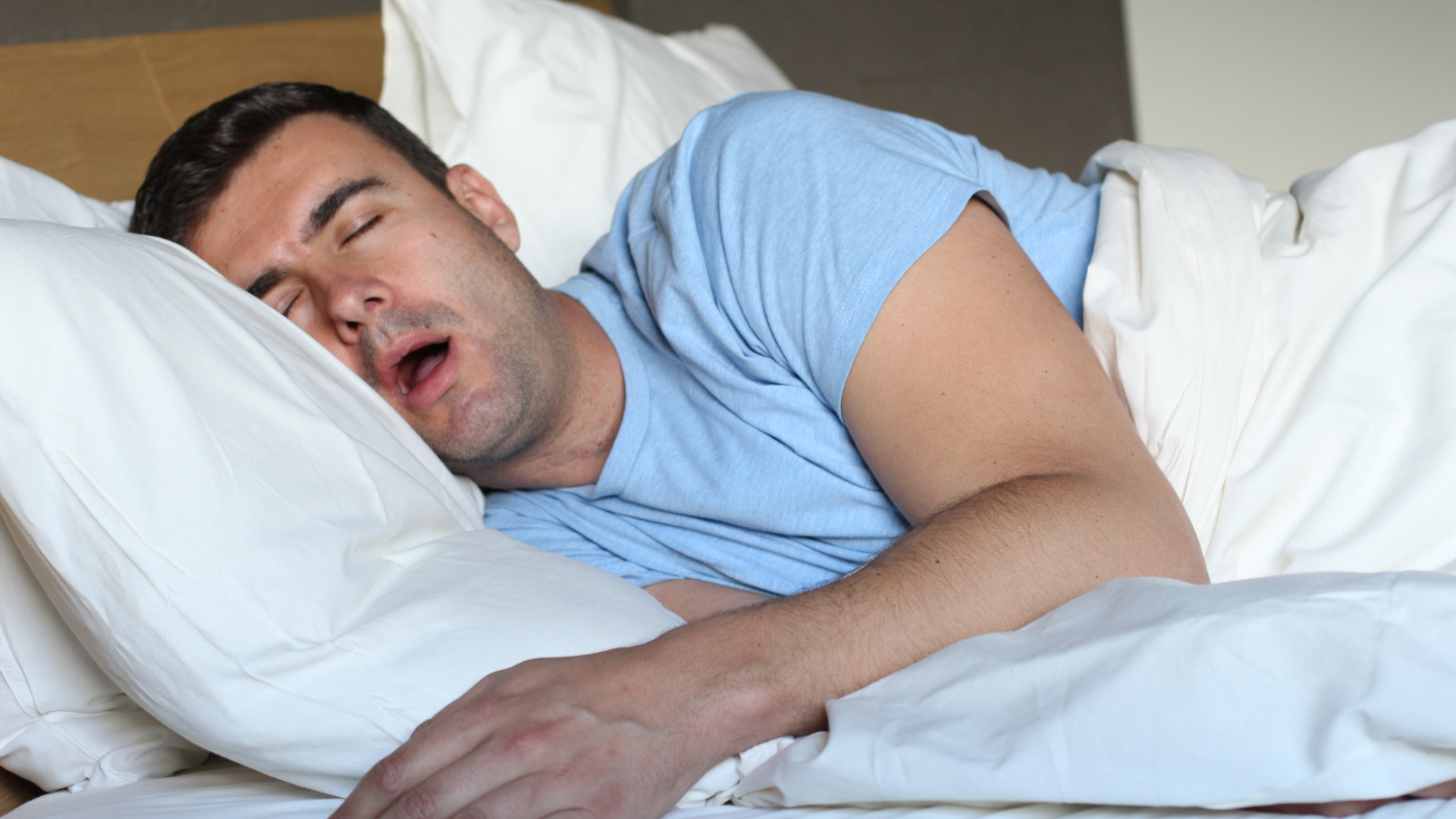
3. Urine
A more obvious cause of yellow stains is urine. Whether you have young kids or pets, it can feel impossible to protect your bed and your pillows from accidents.
Urine contains a pigment called urochrome, which means when these accidents do happen, the yellow stain will be obvious.
While it’s one of the most common mattress stains out there, it’s also one of the most difficult to remove.
This is because urine contains proteins and salts which bind to fabric and solidify. Check out our guide on how to clean urine from a mattress if it’s to blame for your yellow stains.
4. Food and drink spills
A morning cup of coffee or a nighttime tea when you’re cozy in bed is one of life’s joys. But it’s not without its risks.

Spills and even small drips are a main culprit in mattress yellowing. Even just one drop of tea can spread wide, causing a large, unsightly stain that’s difficult to remove.
Similarly, eating in bed can lead to crumbs dropping and bacteria growth. Our advice? Leave the snacks out of the bedroom. Aside from yellow stains, you can also expect to attract pests like dust mites.
5. Cosmetics
Moisturizers, make up, perfume and wax are just some of the cosmetics that can be responsible for excess oils and pigments being transferred to your mattress and pillows.
You might not realize just how much can get on your bed, but as they slowly start to oxidize, you’ll be sure to notice the yellow stains appear.
We’re beginning to understand why so many people opt for that evening shower…
6. Mold
In some cases, yellow stains can indicate mold growth. Excess moisture and bacteria can create the perfect environment for mold to thrive, and sleeping in such close proximity to it can be dangerous to your health.
Look out for a musty smell alongside your yellow stains. If it’s there, it’s time for a replacement.
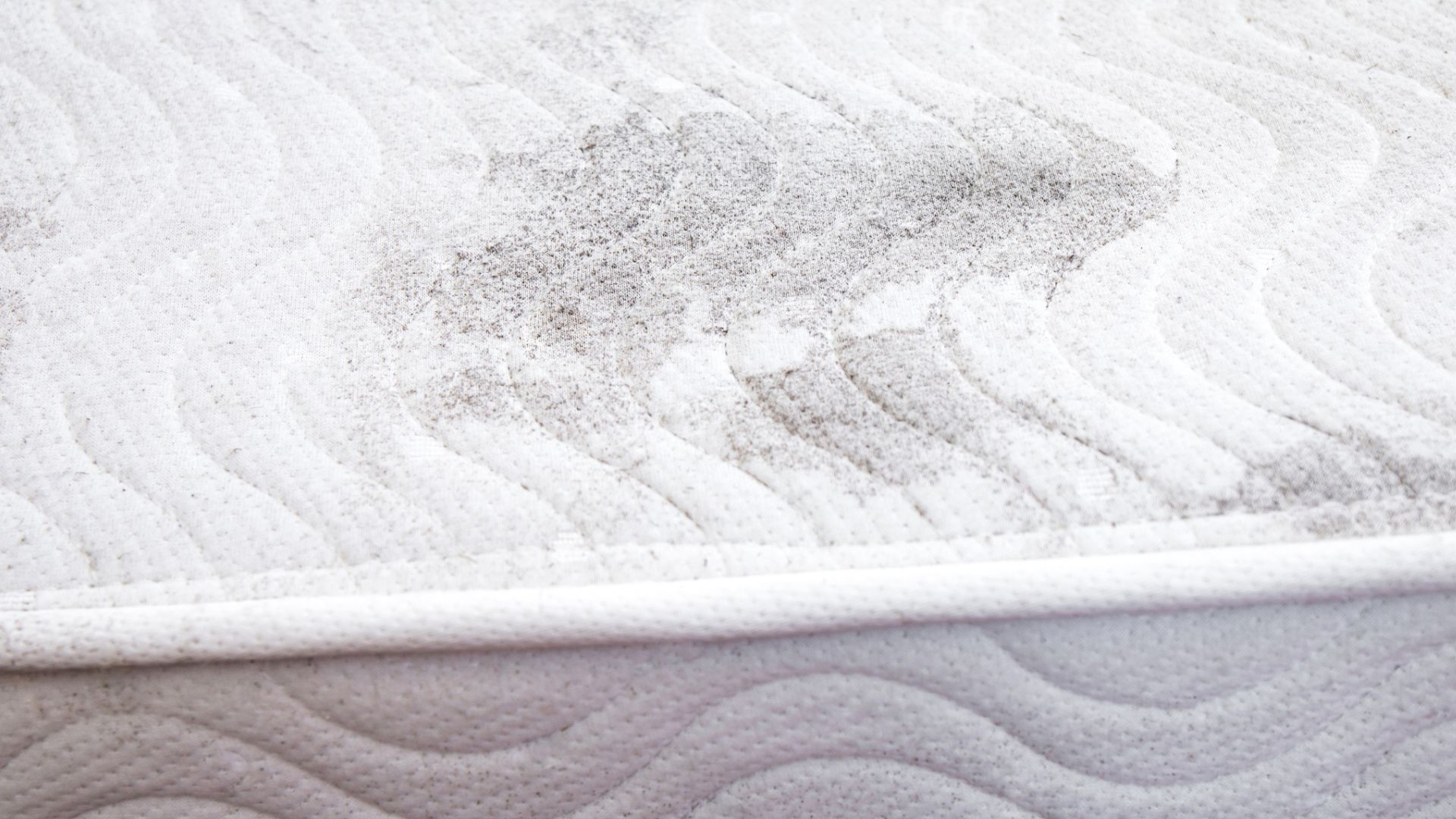
While you can sometimes remove mold from your mattress, if there’s too much growth, it’s better for your health to replace your pillows and mattress.
Our top tip? Never go to bed with wet hair…
7. Vomit
Whether human or from your pet, vomit on a mattress can cause significant dark yellow to brown staining if it isn't cleaned immediately. It can also cause a strong cheese-like smell or sour odor to get trapped within the mattress cover.

Like most other causes of yellow stains on your mattress you need to act fast to get vomit out of your mattress. Use a dry cloth or kitchen paper to scoop up the vomit, then lay a piece over the vomit patch to soak up excess moisture.
From there, spot-clean until you have removed all signs and smells of vomit. You may want to use baking soda to completely eradicate any sour smells.
FAQs
Is it safe to sleep on a mattress with yellow stains?
Deciding whether your mattress is still safe to sleep on, even with the yellow stains, means identifying what has caused them in the first place.
As we said, some mild yellowing is to be expected and doesn’t pose any significant health risks.
However, if you have significant, dark yellow stains caused by sweat and sebum, the bacteria can cause nasty odors which could disrupt your sleep.
Whilst bacteria from sweat and sebum don’t cause many people significant health issues they can create more infections in those with weakened immune systems.
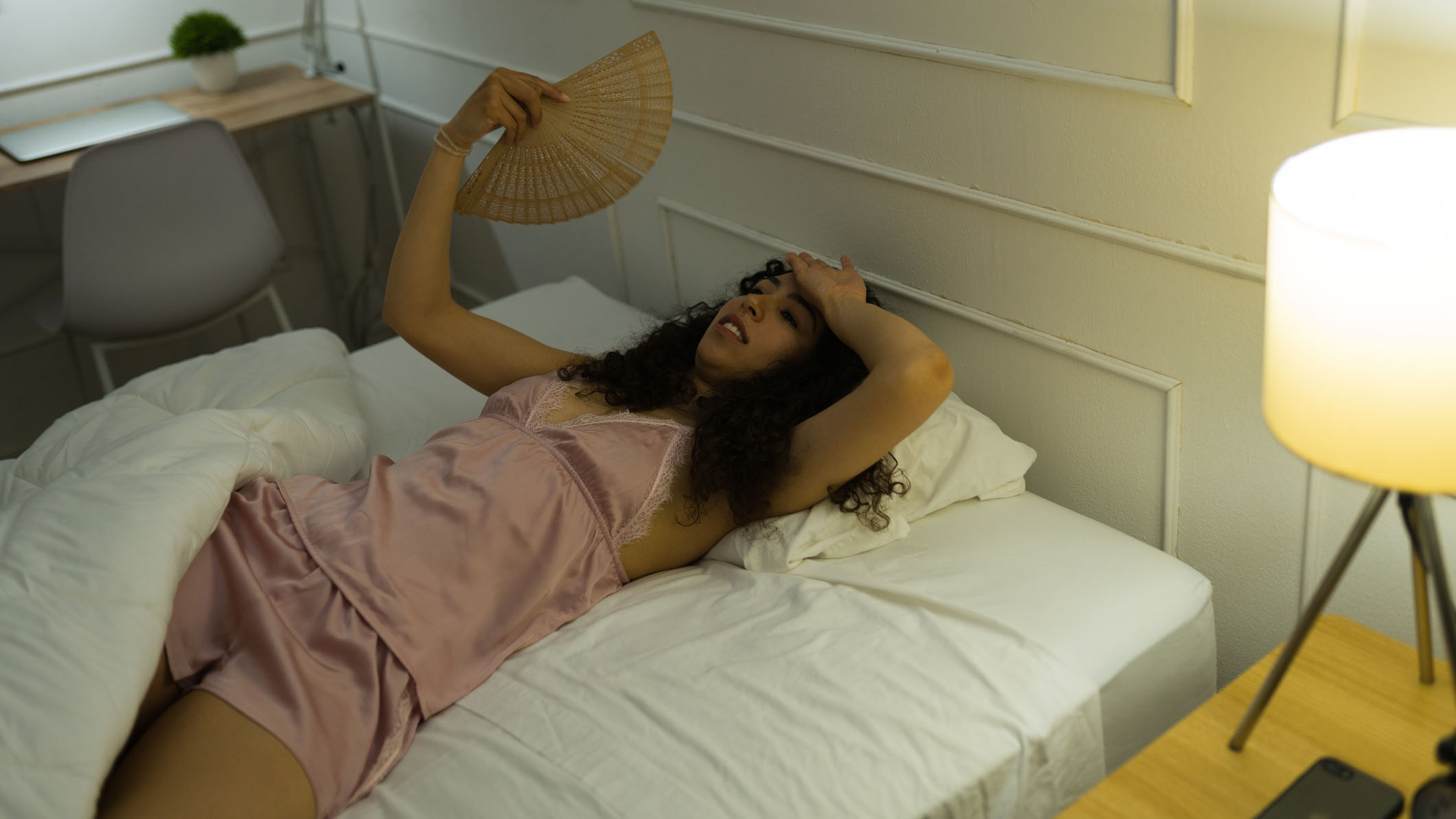
This bacteria can also worsen skin conditions like eczema or psoriasis. Yellow stains caused by sweat might also attract dust mites which can cause allergy symptoms and heighten any eczema and asthma symptoms you already have.
Then there’s the dreaded mold. Mattress mold can show itself in a couple of different ways so educating yourself on how to spot mattress mold and deal with it quickly is a good idea.
If you notice that your yellow stains start to have a musty odor, feel damp or you’re having respiratory issues then it is likely to be mold.
Mold can also show up on your mattress as off-white, pink or fluffy back spots. If you’re noticing mold is purple, brown or green then this usually means that the mold growth is well established and it could be time for a new mattress.
Should you sleep on a pillow with yellow stains?
Again, this really depends on what type of yellow stains are present on your pillow. Often, this is just a sign of age.
However, obvious yellow stains on fairly new pillows can indicate a bacteria build up caused by sweat, body oils and dead skin. This bacteria can contribute to breakouts and as well as irritating the skin.
Like in your mattress, if you notice that your pillow smells off or feels damp, this is a sign of mold and your pillow should be replaced straight away.
Sleeping on a moldy pillow can have some serious health effects leading to respiratory issues, allergies and infections, so it’s crucial to act fast.

Rachael has a keen interest in all things sleep, including her expert knowledge on mattress cleaning, providing readers with the best hacks and tips to keep their beds clean, as well as trying out the latest viral cleaning products. Rachael also reports on leading mattress brands such as Helix, Saatva and Nectar, writing articles designed to help readers understand what they need from a new bed. She also enjoys reviewing home, travel and tech gadgets, especially anything that has been designed to make life easier like smart home gadgets. During the last 15 years, Rachael has contributed to various publications including Tom’s Guide, Creative Bloq, The Independent, The Spectator, Daily Express and more.
- Lauren JeffriesSleep Features Editor
You must confirm your public display name before commenting
Please logout and then login again, you will then be prompted to enter your display name.
